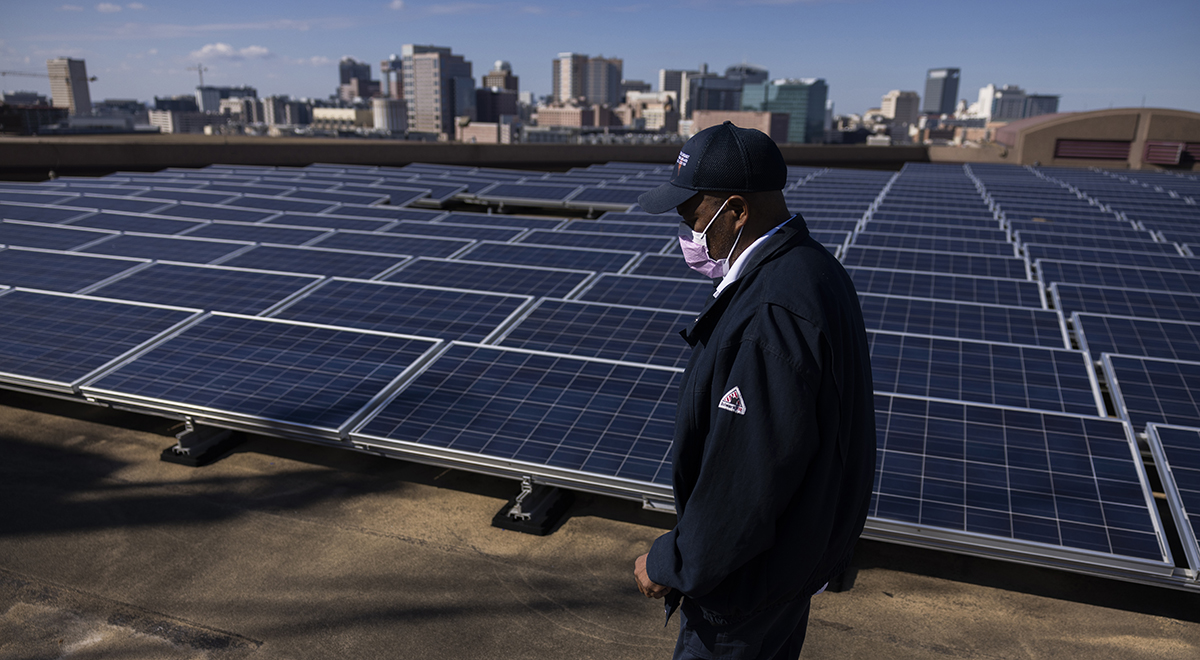|
Getting your Trinity Audio player ready...
|
Hospitals should never harm patients from care that is intended to help them. That's the definition of patient safety. But a growing body of research shows that the very way hospitals operate is causing preventable harm to patients every day.
Globally, 5 percent of greenhouse gas emissions can be attributed to health care, and in the U.S., the share is even higher, at 8.5 percent. Hospitals also appear to emit more than their fair share of pollution that makes people sick. A 2016 report found that 9 percent of respiratory disease from particulate matter could be attributed to the U.S. health care sector.
Since Houston is home to the largest medical center in the world – the 1,345-acre Texas Medical Center, which hosts 8 million patient visits a year – one could assume that our health care carbon footprint here is even more pronounced.
One would have to assume, given that TMC officials did not respond to repeated requests for comment on this column. And they don’t have to answer my calls – or anyone else’s on the topic. Currently, there are no mandates requiring private hospitals or health care systems to track or report their decarbonization efforts.
That’s a real problem, says Dr. Hardeep Singh, professor of medicine at Baylor College of Medicine and the Michael E. DeBakey VA Medical Center. In December, Singh published a paper in the New England Journal of Medicine, calling for policy changes that would require U.S. health care institutions to reduce their carbon emissions – a move that has been codified in many other developed countries.

Leaving out the private sector
Hospitals funded by the federal government, such as the VA where Singh works, are held to the same standards as other federal institutions: “Federal targets call for cutting greenhouse gas emissions by 50 percent by 2030, and then achieving net-zero emissions by 2050,” Singh says. “So the Health and Human Services people said, ‘Hey, private sector! Come join us and take a pledge with us!’”
Few have done so. Understandable, says Singh.
“Health systems right now are quite swamped with staffing shortages, and they’ve had huge financial losses over the last few years, so we’re a little concerned that they are – let’s just say – distracted,” says Singh.
Over the years, Singh says he has learned that voluntary initiatives fall down the list of priorities in health systems tasked with combatting such pressing issues. Recently, he says, “I decided that everything that I was calling for – all my calls to action, all my yelling from the rooftop – was not working. And one of the reasons why it’s not working is because I've always thought of it as voluntary. And it’s just not working. We’re still harming patients. And I think we will still be harming the planet, the climate and therefore our patients until we actually take a very serious look into what we can do as a health system.”
Last June, a fraction of U.S. hospitals – 61 health care systems in total – pledged to align their goals with the federal targets, including CommonSpirit Health, the nonprofit health system that runs St. Luke’s Health in Houston.
St. Luke’s plans to cut its energy use by 4 percent this year, another 4 percent in 2024, then 3 percent in each of the following three years. That would have real results. Terry Scott, division director of facility management at St. Luke’s, said every 1 percent reduction saves as much energy as taking 2,170 cars off the road for a year, or providing electricity for 1,209 homes for a full year.
“We’re reducing our carbon footprint to be better neighbors, with less pollution,” says Scott. “And for my kids or my grandkids when they get older: What’s it going to be like for them if this doesn’t happen?”
It’s a natural thought to consider the environmental impacts for future generations, but Singh argues we don’t have to go that far.
“I think people sort of forget that climate impact is no longer a distant thing. It’s happening. Now. It’s affecting our generation – not our children, not our grandchildren,” he says.
Dr. Eric Bernicker, a thoracic medical oncologist at Houston Methodist Hospital, has been keeping tabs for years on how poor air quality harms his patients. As someone whose career is dedicated to treating lung cancer patients, he knows it’s not exactly a revelation to link poor air quality and lung health. But as chair of the climate change taskforce for the American Society of Clinical Oncologists, he’s on a mission to spur discussion about how doctors can drive change.
The deadliest cancer
About 15 percent of lung cancer patients have never smoked, a rate that has been increasing for the past couple decades or so, dovetailing with more data that links air pollution to adverse health outcomes.
Lung cancer is the deadliest form of cancer in the U.S., accounting for one in five cancer deaths. It’s the thief that took my mother from me decades before I was prepared to live in a world without her.
I was 16 when she and my father sat me down to tell me about her diagnosis. Sixteen when I learned that the first question my friends and teachers would ask would smack of accusation: “Well, does she smoke?” Sixteen when I saw a little ray of sympathy leave their faces when I told them she had smoked for years.
I wish I could hug that little 16-year-old version of myself sometimes. Smooth her hair and squeeze her tight the way my mother was too exhausted to do, and tell her everything would be terrible for the next five years, but I would survive, even when Mom didn’t.
That option’s off the table for me, since I don’t have a time machine. But steps can be taken now to keep more girls from losing their moms.
Some hospitals are taking those steps. At the Michael E. DeBakey VA Medical Center, a vast sea of elevated solar panels serves as carport-style covered parking. And throughout the 3 million square feet of operating space, 40-watt light bulbs have been swapped out for 28-watt bulbs.
“Little bitty things, when you do it hospital-wide, actually made a big difference,” says Morolake Omoruyi, the VA’s chief facility engineer. Like, really big: Between 2012 and 2022, the VA cut its electricity costs by more than half, from $5.8 million, to $2.2 million.
They’re also working to eliminate Styrofoam in the hospital’s food service department.
At MD Anderson Cancer Center, hospital leaders are launching the Institutional Sustainability Committee, with the aim to “get to net zero,” says Shibu Varghese, senior vice president of people, culture and infrastructure.
Memorial Hermann tells me they offset some of their emissions through tree planting programs.
The initiatives vary from hospital to hospital largely because there’s no written guidelines for what hospitals should or must do. But there could be. And, Singh says, there should be.
“Generally speaking, Texas Medical Center hospitals compete a lot, but I love the way everybody came together for COVID,” says Singh. “All the vendors and all the hospitals and everybody came together collaboratively because we were fighting a common enemy.”
Climate change is a common enemy too.
Houston, Singh says is “the epicenter of the largest medical center in the world, the Texas Medical Center.” His voice, for a moment, sounds less like he’s shouting from the rooftops and more like he’s taking a step back to ponder. “I mean, can you imagine if we take a stand and can come up with something really good on climate? Could you believe it? That would be such a cool example. I mean, it would have true impact.”
It would, in fact, avoid harm to patients from care that is intended to help them.
Share your Houston stories with me. We can start on Twitter, Facebook and Instagram. Or you can email me at [email protected].





